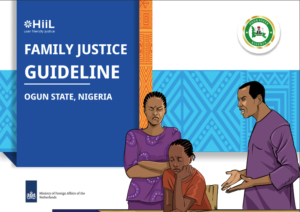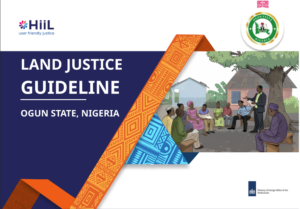Ogun State Guidelines
Guidelines are sets of recommended interventions on how to resolve problems. They can cover cover family, land, employment and neighbour conflicts. Also known as Treatment Guidelines, they are based on empirical research and combine knowledge from the fields of psychology, communications, criminology, and conflict resolution.
Guidelines have immense potential in realising people-centred justice – that is justice which prioritises people’s most pressing legal needs and the outcomes they seek. HiiL develops country-specific guidelines per justice problem.
In Ogun State, together with an expert committee, we have defined evidence-based guidelines which address family justice issues and land conflicts.
Lawyers, paralegals, judges, mediators, and general practitioners can all reference and use these guidelines to prevent or resolve people’s justice problems.
Guidelines detail ‘what works.’ They are proven approaches to dealing with issues so practitioners don’t have to rely solely on their individual experience or limited disciplinary knowledge.
 Guideline for family conflicts (link above)
Guideline for family conflicts (link above)
We all can experience some form of conflict with a family member such as a spouse, sibling, parent or child. In many cases, dialogue and negotiation can bring forth a solution. However, in some cases conflicts escalate and lead to serious consequences that deeply affect people’s lives. Separation, divorce and domestic violence make up the majority of family problems.
The Family Justice Guideline provides actionable ways for users and professionals to reach solutions to resolving family problems.
 Guideline for land disputes (link above)
Guideline for land disputes (link above)
Land issues can affect communities and nation-states alike. Such disputes include but are not limited to disagreements on boundaries, ownership and inheritance, and how land is used or managed. Economic factors and climate change exacerbate these concerns.
The Land Justice Guideline tailor-made for Ogun State focuses on four distinct areas. It contains 21 recommendations, 76 best practices, and 36 suggested practices that support practitioners in their efforst to help people.

